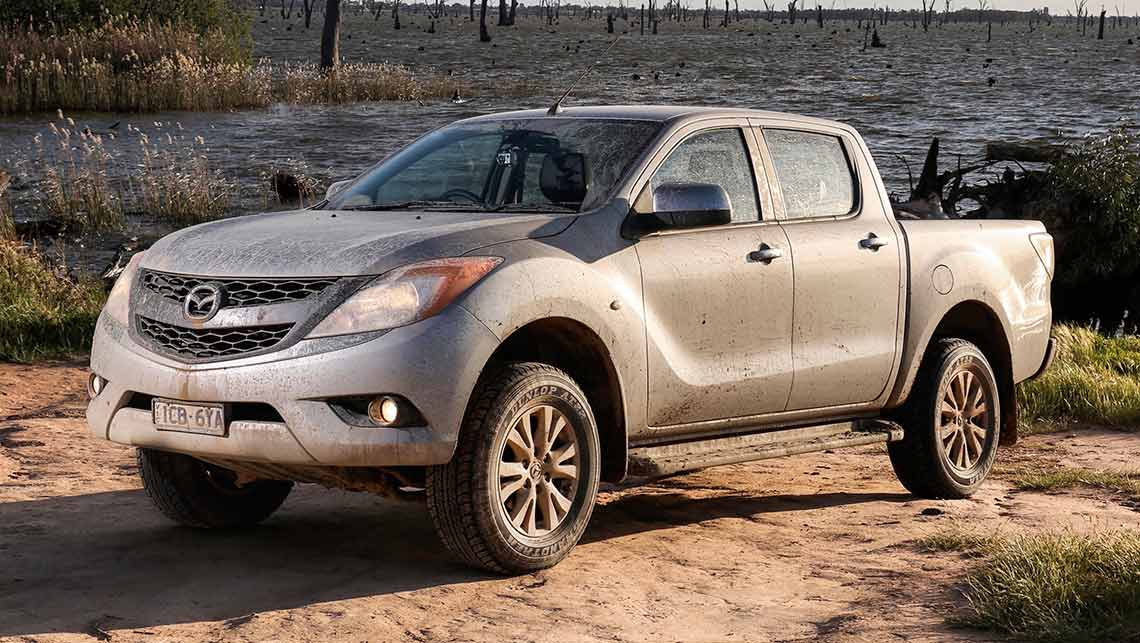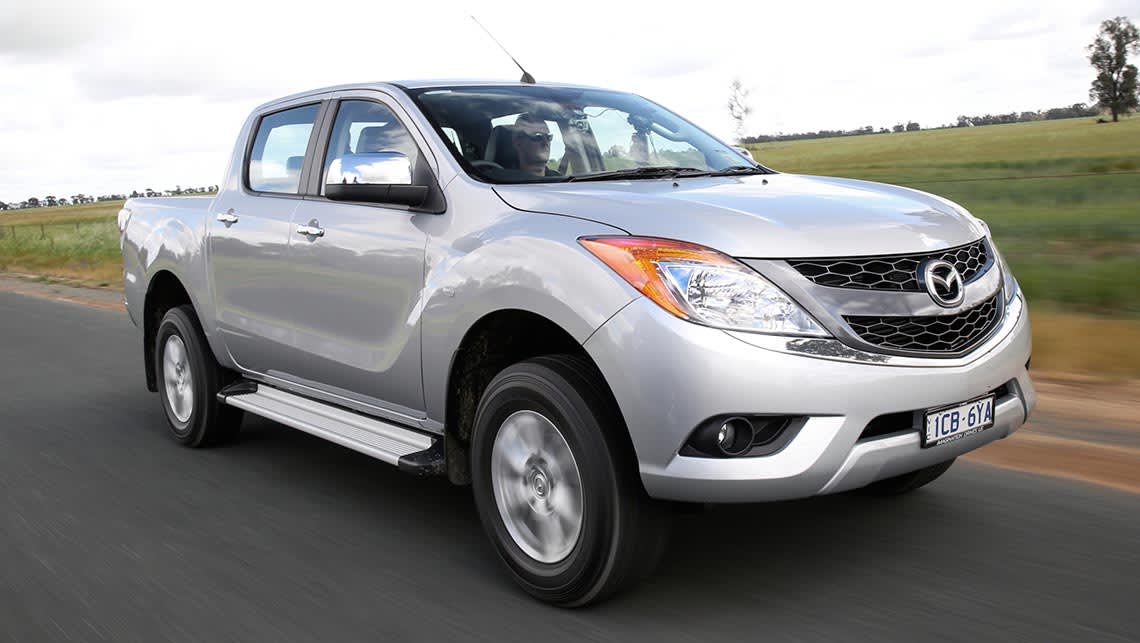
The price makes the BT-50 the must-have four-wheel-drive best for the family.
There’s a lot more going for the pretty boy of the pick-up crowd than slick looks. The Mazda BT-50 may appear to be a jacked-up car but its underpinnings (shared with the Ford Ranger) make it a steroid-infused party animal in any environment.
About half of all buyers maintain the bling theme by adorning their vehicle with factory accessories. The biggest thing going for the BT-50 is its cheap than a Ford Ranger and with more appeal to the gentler half of the family it is hard to overlook as a private buy.

The low-speed ride is mildly choppy. That’s what you get with rear leaf springs and is one of the few compromises the Mazda has to make in terms of its bitumen behaviour.
Towing capacity is 3500 Kgs and that ability will have some impact on the ride in comparison with a “softroading” SUV. As the pace picks up on the highway, that unsettled feeling subsides dramatically – there are sedans that don’t react to 100km/h hits on expansion joints as well as the Mazda does.

There was this day I was driving from Nakuru to Nairobi and this Mazda BT50 passed me, I really liked how it was handling corners at higher speeds with minimal body roll. I was impressed I must say, even the looks of this vehicle is very “beautiful”.
The steering is equally impressive. There’s a CX-5-style feel and responsiveness in the Mazda – shared only with the Ranger and the VW Amarok.
This trio is in a separate class in terms of driving dynamics and are the only 4WD to successfully combine cargo carrying with family friendliness.
Hub-deep ruts are navigated without resorting to 4WD low range and only on one tormentingly treacherous uphill slop are we required to stop and shift into the more extreme mode. In that case the traction control is automatically disabled to let the rear wheels run wild.
It’s a similar story – still without low range – on a tight, cambered sand ‘course’ we carve out later. The unladen tray is more help than hindrance as it drifts on demand to sweep around the corners and the 3.2-litre turbo diesel just keeps on torquing its way through the ever-loosening sand.
With tyre pressure down to 22 psi, it bites with enough venom to dispense with seriously severe ledges and sill-deep water crossings over lichen-smooth rocks.
The ride is still assured and assertive: you don’t feel any squirm through the wheels as it progresses over impressively large obstacles. There’s the further assurance of underbody cladding when you tackle something larger than the 200mm of ground clearance.
The hill descent control is composed and, when more speed is desired, it can be momentarily be overridden by the accelerator.
Specifications
- Fuel consumption 9.2L/100km (combined), 246g/km CO2
- Warranty 3yr/100,000km
- Service Interval 12 months/10,000km
- Engine 3.2-litre 5-cyl turbodiesel, 147kW/470Nm
- Transmission 6-spd automatic; 4WD
- Spare full-size
|
|||||||||||||||||||||||||||||||||||||
|---|---|---|---|---|---|---|---|---|---|---|---|---|---|---|---|---|---|---|---|---|---|---|---|---|---|---|---|---|---|---|---|---|---|---|---|---|---|
| source | |||||||||||||||||||||||||||||||||||||
| source 2 | |||||||||||||||||||||||||||||||||||||